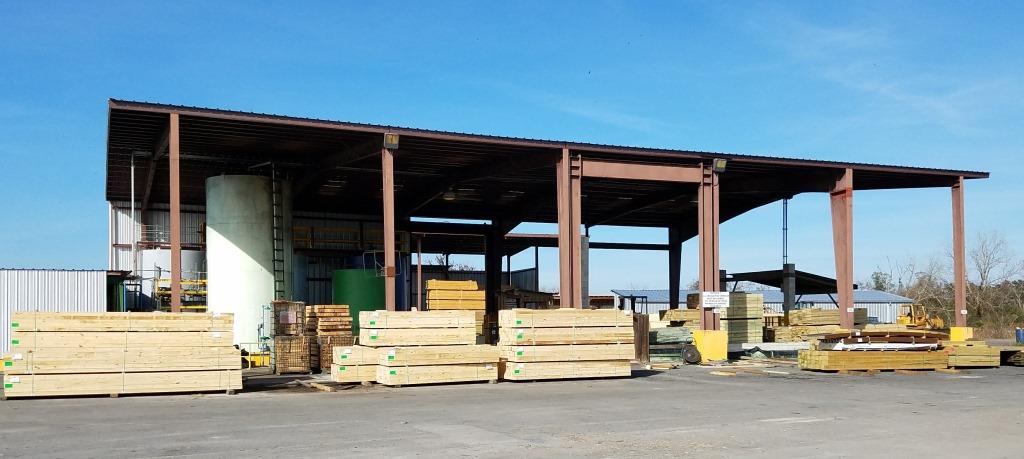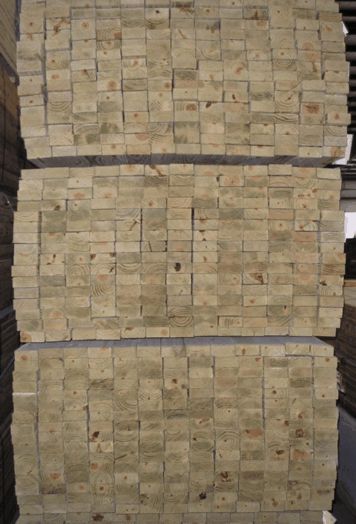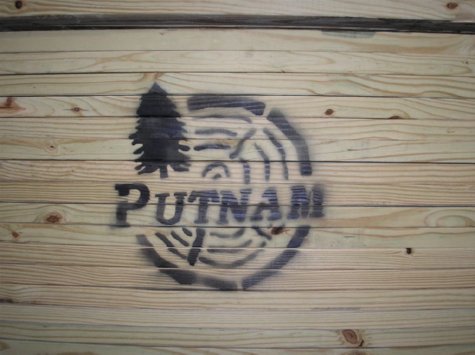Pressure Treated Lumber & Plywood
When specified by our clients, we pressure treat lumber and plywood with chemical preservatives to render the fiber useless as a food source for fungi, termites and other wood destroying organisms. Ideal applications for pressure treated lumber and plywood include decks, landscaping, fences, outdoor furniture, flooring, walls, and roofing systems.

USE CATEGORY SYSTEM: USER SPECIFICATION FOR TREATED WOOD
Putnam Lumber wants to make all customers aware of the American Wood Protection Association (AWPA) Standard for the Use Category System for treated wood. The AWPA Standards for the Use Category System (UCS) for treated wood have been adopted by the International Code Council (ICC). The Use Categories describe the exposure conditions that treated wood may be subject to in service. The UCS requires customers that purchase treated wood to specify whether the wood must be treated for a particular Use Category such as UC2 or UC4A. The Standards for the UCS require that lumber for exterior above ground use in tropical climates shall be treated to Ground Contact UC4A. For a detailed explanation of the codes please refer to the following link USE CATEGORY SYSTEM: USER SPECIFICATION FOR TREATED WOOD
Wood Treating Chemicals
A majority of the lumber we distribute is pressure treated with a fungicide and copper-based preservative known as Copper Azole. The treatment process we specify is usually CA-C (dispersed copper azole) or MCA (micronized copper azole). Most of the lumber we export is stored inside our warehouse and is not pulled for pressure treating services until ordered by our client. We can supply lumber for your order with one of several treatment options:
CA-C & MCA Preservatives

These treatment processes are the most popular among our export clients. Both CA-C (dispersed copper azole) and MCA (micronized copper azole) preservatives provide protection against termites and fungal decay. Both of these treatment processes are very similar and are considered interchangeable by our clients.
Wolmanized EraWood™ Preservative
Wolmanized EraWood™ delivers all the performance of traditional pressure treated wood with an EPA-registered carbon-based preservative. A proprietary stabilizer is included to minimize the effects of moisture and help prevent warping, twisting, and cracking. The preservative formulation has low impact; the wood it protects is GreenSpec®-listed, has NAHB Research Center National Green Building Certification, and has earned the Good Housekeeping Seal. Despite the low environmental impact of the wood, there is nothing gentle about its effectiveness. This wood is listed in AWPA standards against fungal decay and termite damage. This wood is intended for out-of-ground use, such as deck platforms & railings, stair treads & risers, beams & joists, fence boards, door & window molding & trim, siding, soffit & fascia, and outdoor furniture.
CCA (chromated copper arsenate) Preservative
The CCA treatment process has been used as a preservative for over 70 years and is still available for use in approved applications, such as poles, piles, timbers, posts and plywood. The chemical used to preserve wood is a mixture of the oxides of copper, chromium and arsenate.
KDAT (Kiln-Dried After Treatment) Service
When lumber and plywood is pressure treated with chemical preservatives, the moisture content of the wood is increased significantly. After installation, lumber and plywood needs to dry its naturally occurring content before sealants, paints or stains are applied. This drying process can take weeks or even months to dry naturally. Lumber and plywood can be placed in a kiln dryer after treatment to reduce the moisture content back to the naturally occurring content.
Recommended Hardware for Pressure Treated Wood

Hot-dipped galvanized fasteners (meeting ASTM A 153) and connectors (ASTM A 653 Class G185 sheet), or better, are recommended. For Permanent Wood Foundations and corrosive environments, such as areas with saltwater spray, use 304 or 316 stainless steel.
Aluminum flashing (3015 or similar alloy) may be used in contact with CA-C treated wood in interior or exterior, above ground applications that are damp or intermittently wet. When treated wood is subject to immersion or frequent or prolonged wetting, factory coated aluminum or an insulating moisture resistant barrier should be used between the treated wood and the aluminum.
Treated Wood Applications & Service Life
Pressure treated wood has virtually unlimited uses and applications. The service life of wood is greatly increased when pressure treated with preservative chemicals. Pressure treated timber piling in the U.S. has a documented service life of over 85 years, with no record of failure. The service life of wood depends on the treatment process that is selected and will vary depending on the application of use, quality of installation and environmental factors.
For more detailed information on preservative-treated wood, please visit the United States Forest Service's website: USDA / USFS T&D Publications.